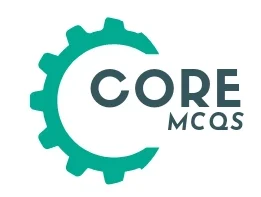Biology Chapter 6 Entry test MCQs
51. Ascaris is which one of the following?
a. Intestinal parasite
b. Ectoparasite
c. Urinogenital tract parasite
d. Respiratory tract parasite
52. Polymorphism is a feature exhibited by members of:
a. Arthropoda
b. Coelenterates
c. Platyhelminthes
d. Porifera
53. ———–is a triploblastic organism.
a. Sea Anemone
b. Jelly Fish
c. Corals
d. Tapeworm
54. In arthropods, the body cavity is in the form of:
a. Haemocoel
b. Coelon
c. Enteron
d. Pseudocoelom
55. ———is also called liver fluke.
a. Tacnia
b. Dugesin
c. Coral
d. Fasciola
56. Name of common gut roundworm parasite of human and pigs.
a. Lumbericus terresaris
b. Ascaris lumbericoides
c. Hirudo medicinalis
d. Pheretima posthuma
57. ———– is a good example of polymorphism.
a. Starfish
b. Hydra
c. Euplectella
d. Obelia
58. In radial symmetry, all body parts are arranged around the central axis. Radial symmetry represents————-mode of life.
a. Streamlined
b. Sessile
c. Parasitic
d. Active
59. Pseudo-coelomates have a body cavity but it is not true coelom. Which one of the following is included in the group?
a. Tapeworm
b. Planaria
c. Ascaris
d. Earthworm
60. Taenia is an endoparasite of human, pig and cattle, which belongs to phylum:
a. Aschelminthes
b. Cnidaria
c. Platyhelminthes
d. Annelida
61. Body of———-consists of segments called proglottids, which contains mainly sex organs.
a. Ascaris
b. Planaria
c. Tapeworm
d. Fasciola
62. —— is a common parasite of the intestine of human and pig, to phylum nematode.
a. Schistosoma
b. Taenia solanum
c. Fasciola hepatica
d. Ascaris lumbricoides
63. Snails are the intermediate hosts in:
a. Taenia solium
b. Fasciola hepatica
c. Ancylostoma duodenale
d. Schistoma
64. ——— is an intestinal parasite of man belonging to phylum nematoda.
a. Wacheroni abancrolti
b. Taenia solium
c. Schistoma
d. Ascaria lumbricoides
65. Following group is the example of acoclomates:
a. Molluscs
b. Platyhelminthes
c. Annelids
d. Aschelminthes
66. The larva formed during the life cycle of Annelida is:
a. Trochophore larva
b. Glochidium larva
c. Tornaria larva
d. Bipinnaria larva
67. Platyhelminthes are:
a. Radially symmetrical and triploblastic
b. Bilaterally symmetrical and diploblastic
c. Radially symmetrically and diploblastic
d. Bilaterally symmetrical and triploblastic
68. Pheretima posthuma is the scientific name of:
a. Earth worm
b. Planaria
c. Tape worm
d. Liver fluke
69. Which group of organisms has the following features?
- Three pairs of jointed legs
- Three-part segmented body
- One pair of antennae
a. Insects
b. Arachnoids
c. Myriapods
d. Crustaceans
70. Platyhelminthes means:
a. Segmented worms
b. Flat worms
c. Round worms
d. None
Vertebrate Phyla
71. Reptiles flourished throughout————-era.
a. Proterozoic
b. Cenozoic
c. Mesozoic
d. Devonian
72. Birds do not have teeth so the function of teeth is performed by:
a. Stomach
b. Beak
c. Gizzard
d. Pharynx
73. Which of them is not poikilotherm.
a. Crocodile
b. Spiny ant cater
c. Snake
d. Lizard
74. The lower jaw is composed of only one large bone:
a. Chondrichthyes
b. Reptiles
c. Mammals
d. Amphibian
75. Opossum and koala bear belongs to sub-class:
a. Metatheria
b. Prototheria
c. Monotremata
d. Eutheria
77. All chordates share these features expect:
a. Post anal tail
b. Notochord
c. Vertebral column
d. Gill slits
78. The central nervous system of chordates is:
a. Lateral
b. Ventral
c. Dorsal and hollow
d. Ventral and hollow
79. Balanoglossus and Saccoglossus are members of:
a. Nematoda
b. Echinodermata
c. Hemichordata
d. Annelida
